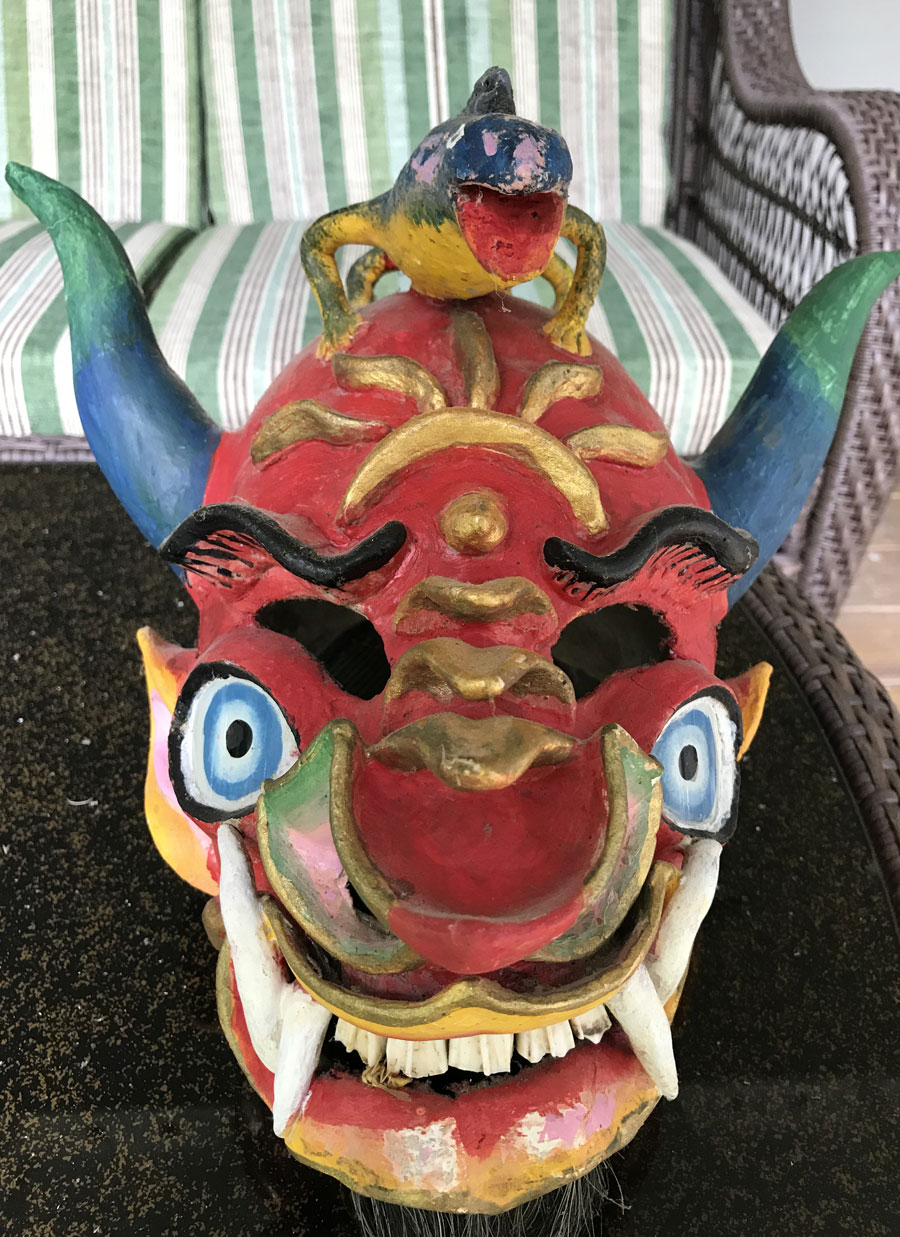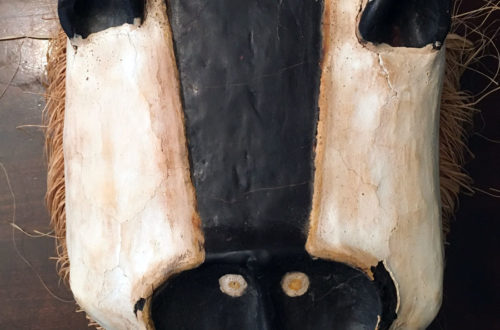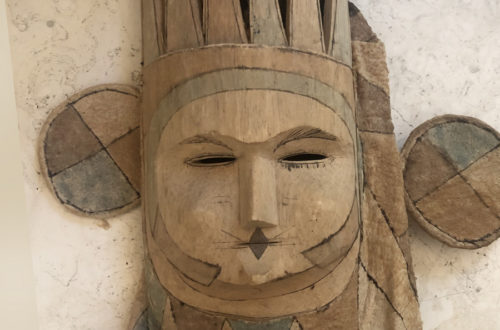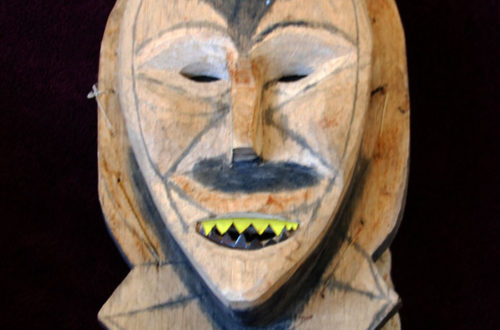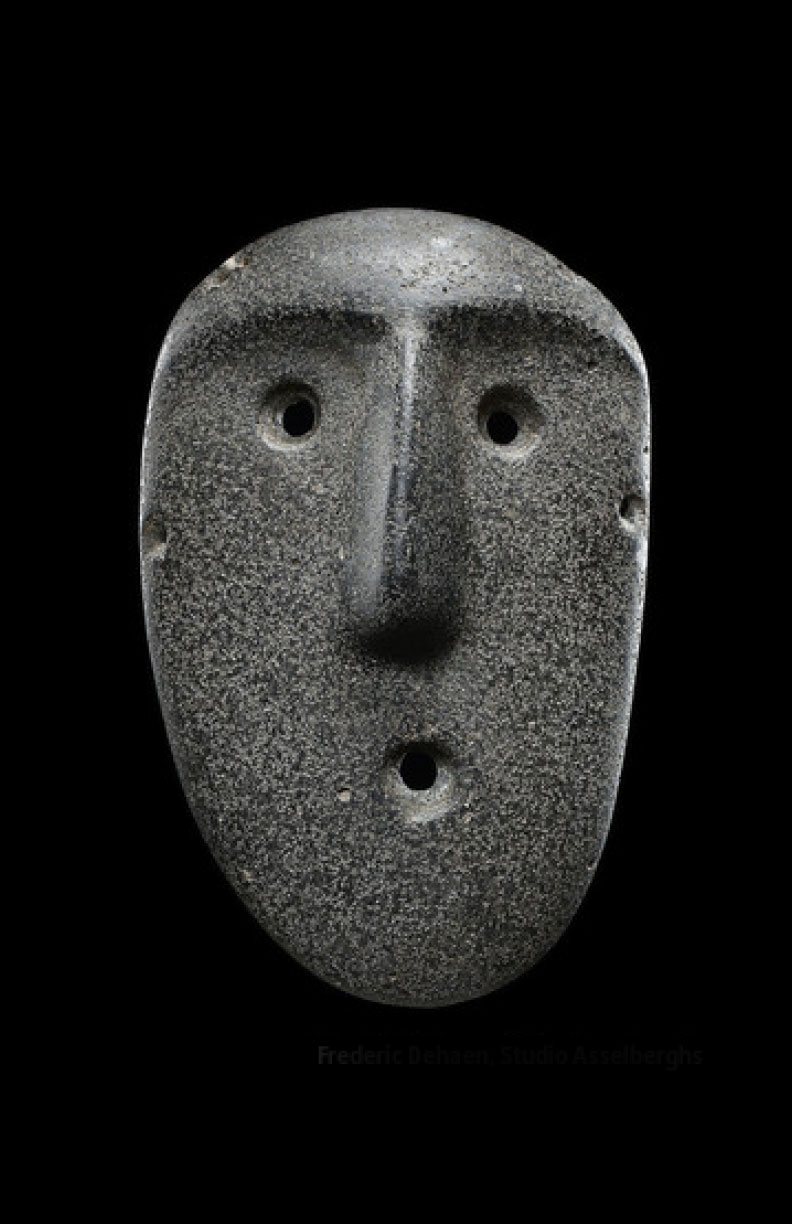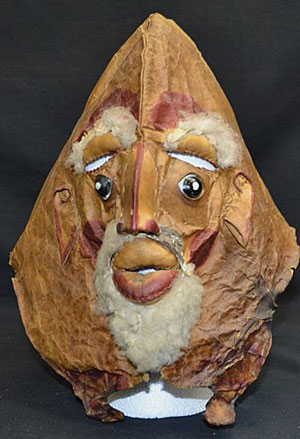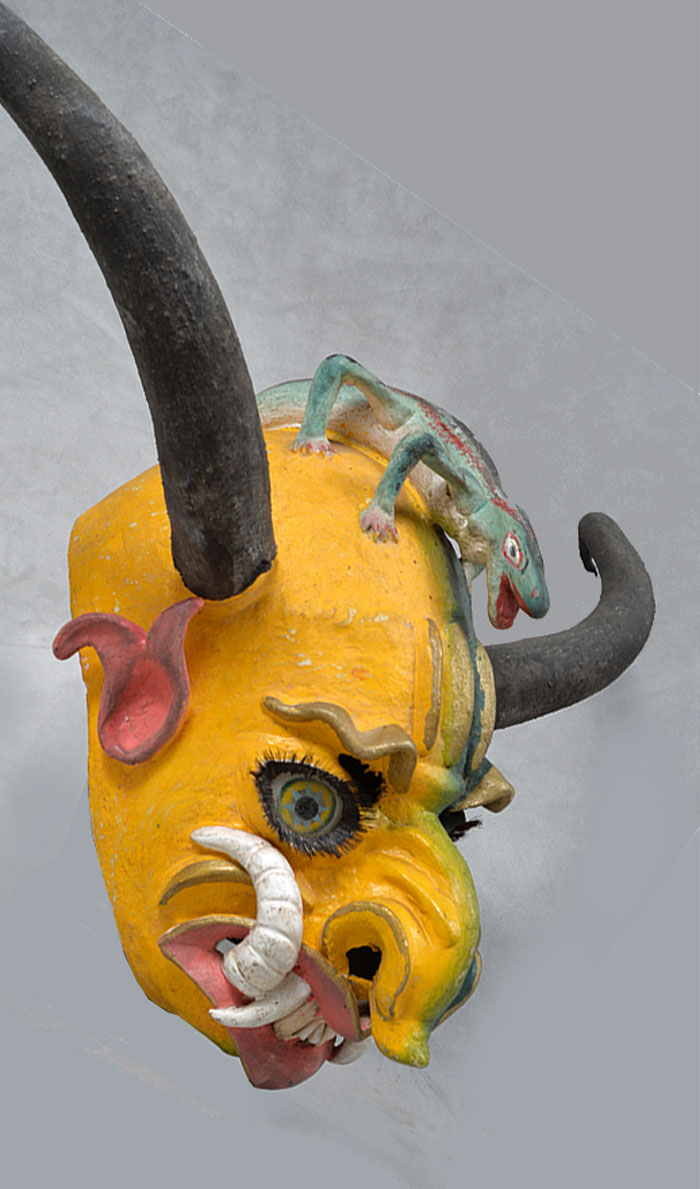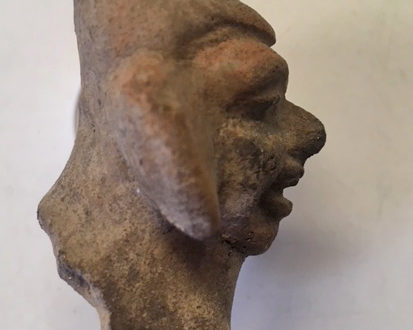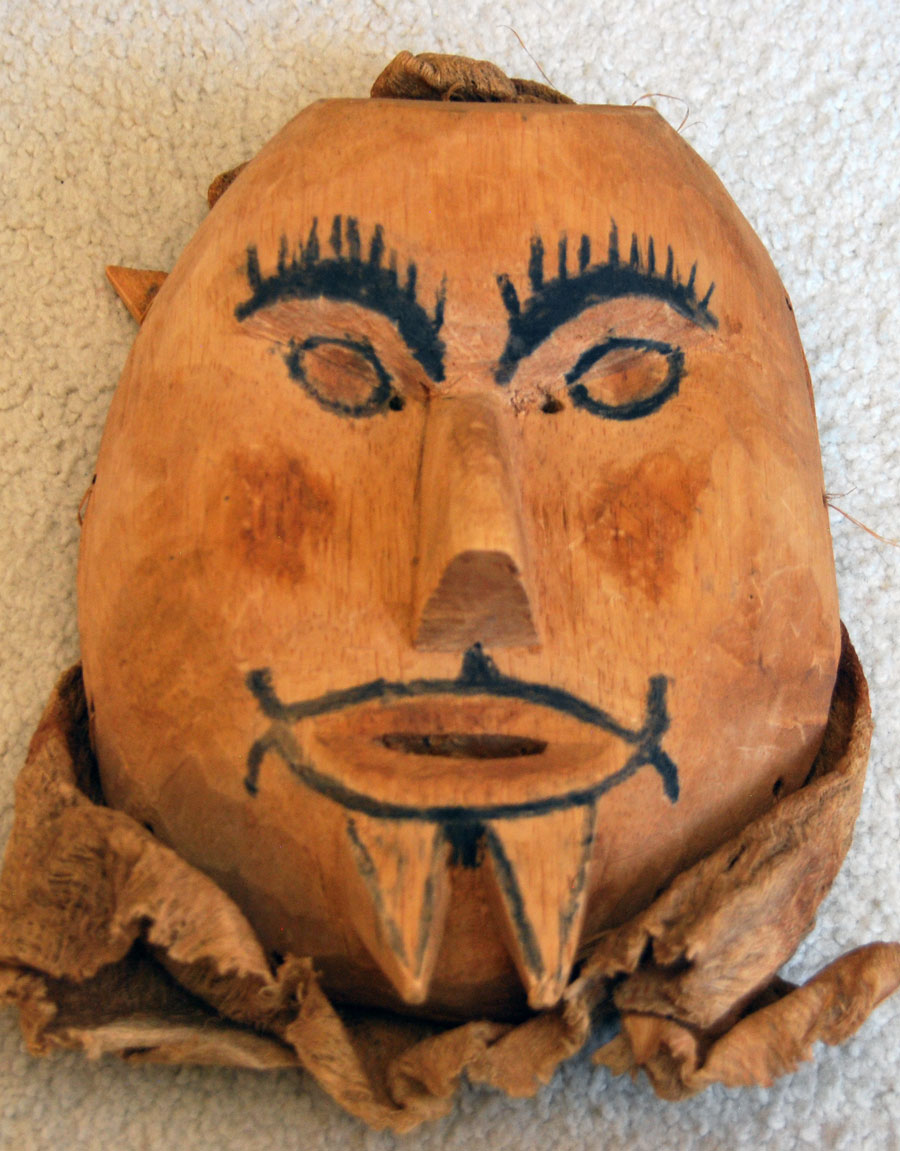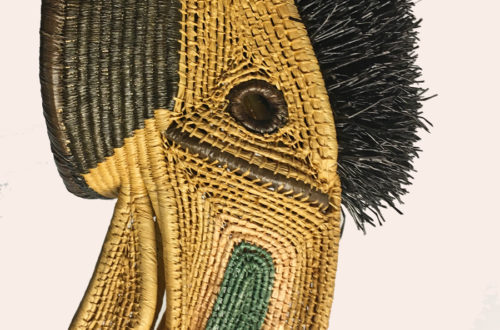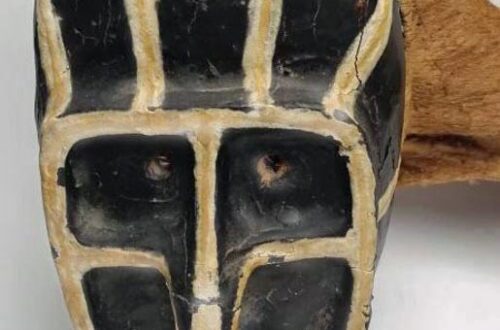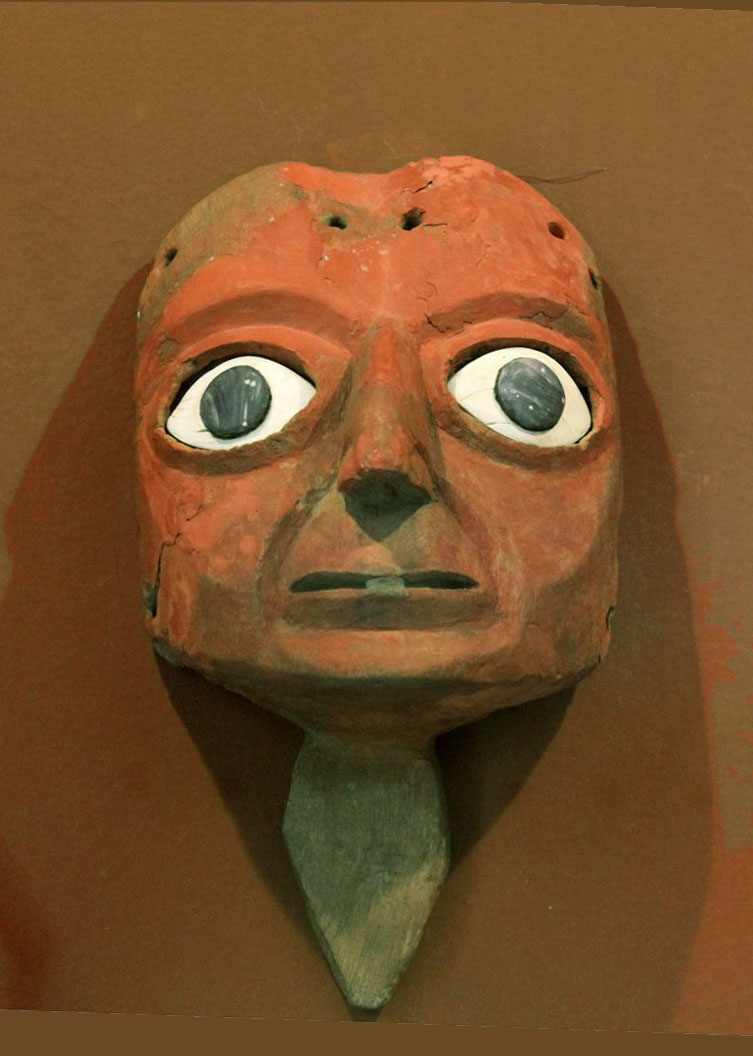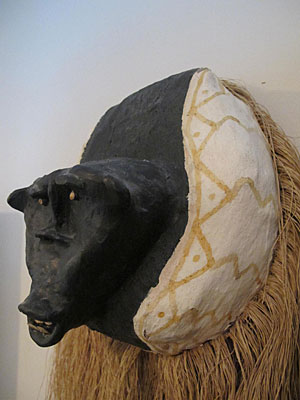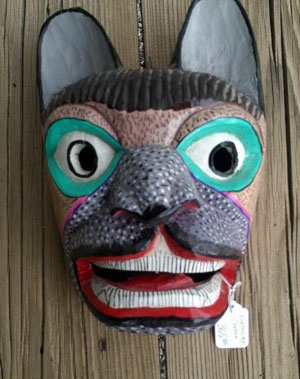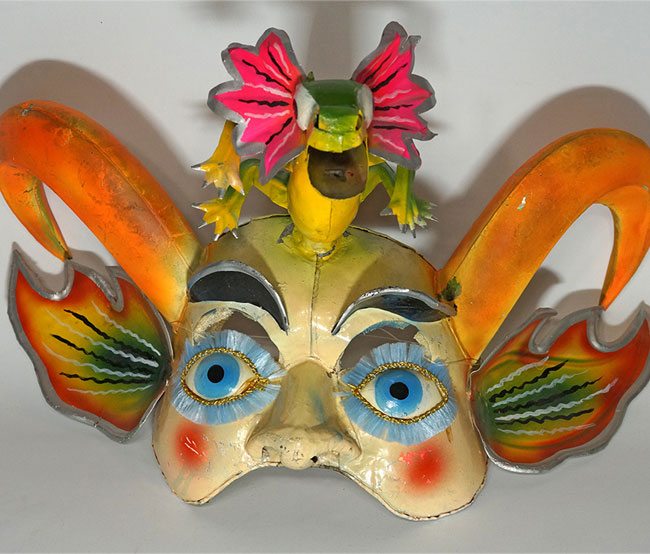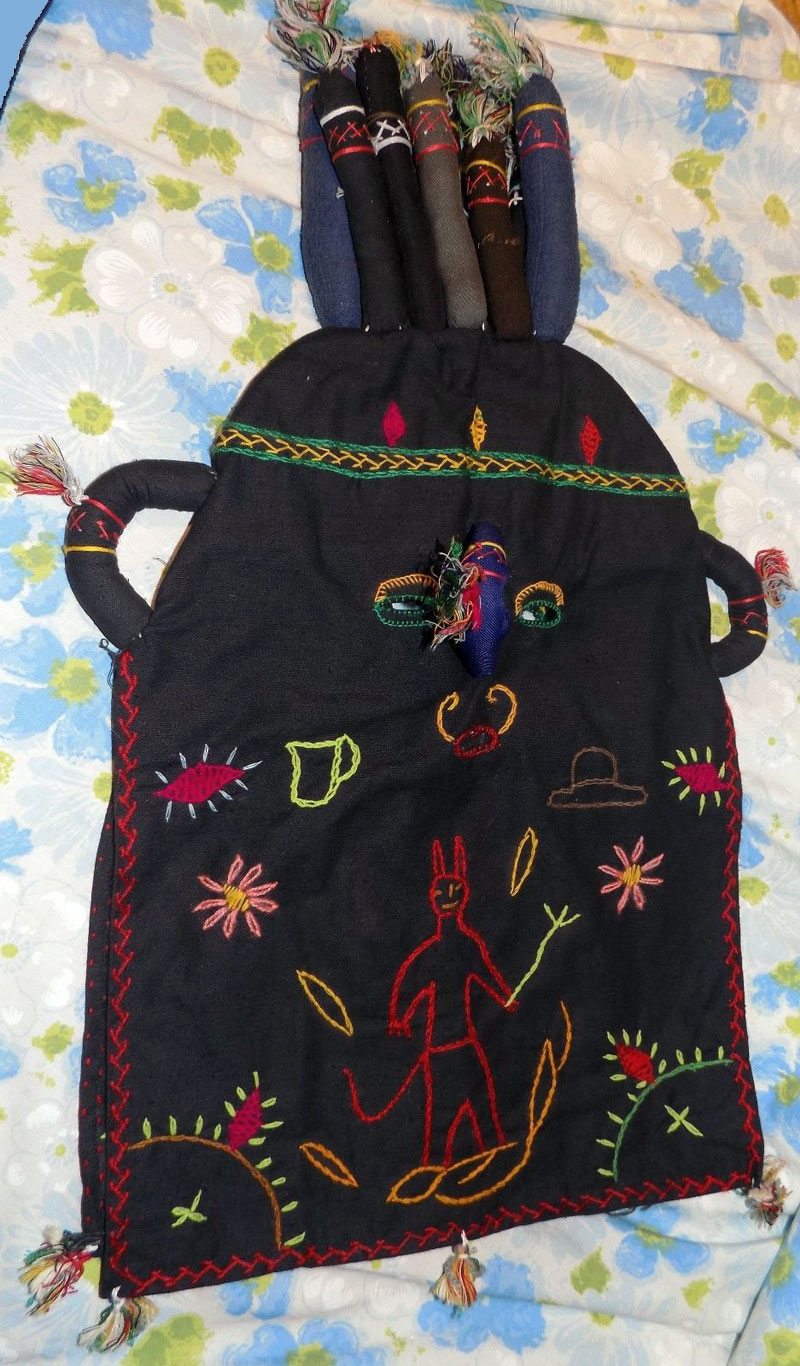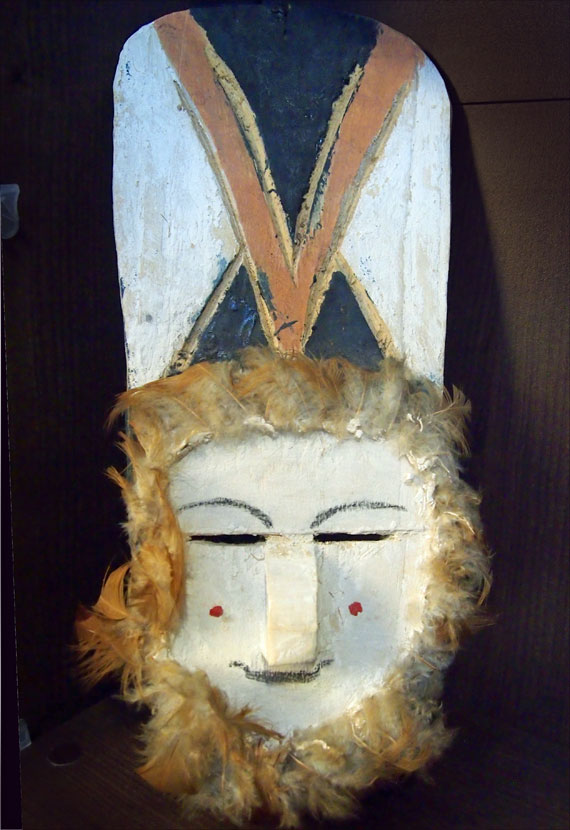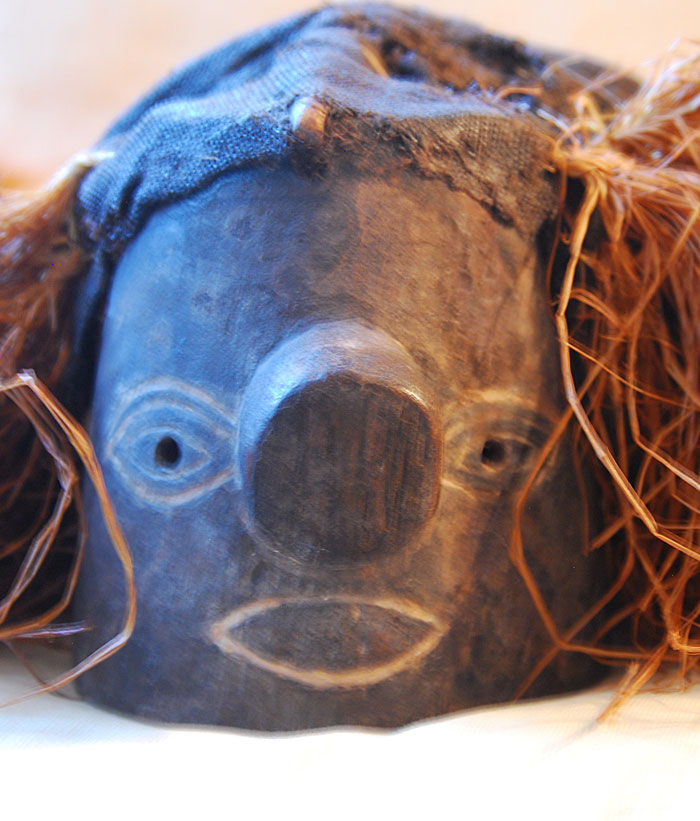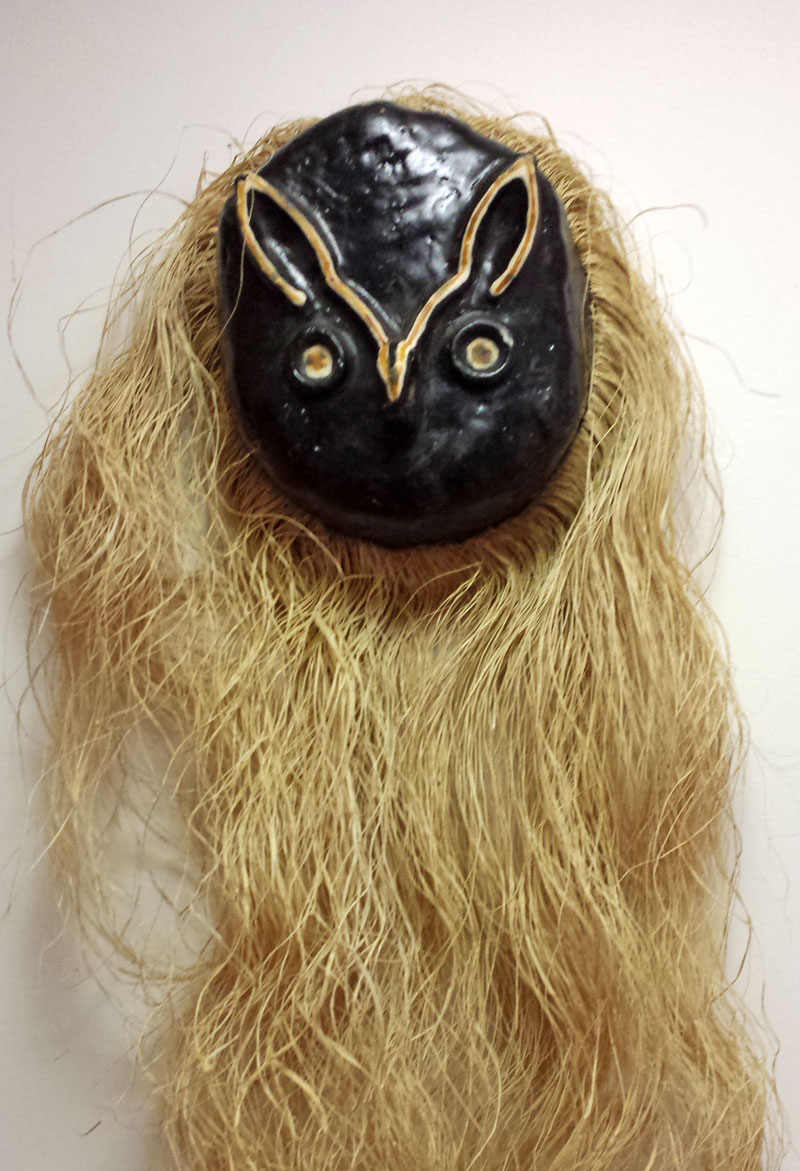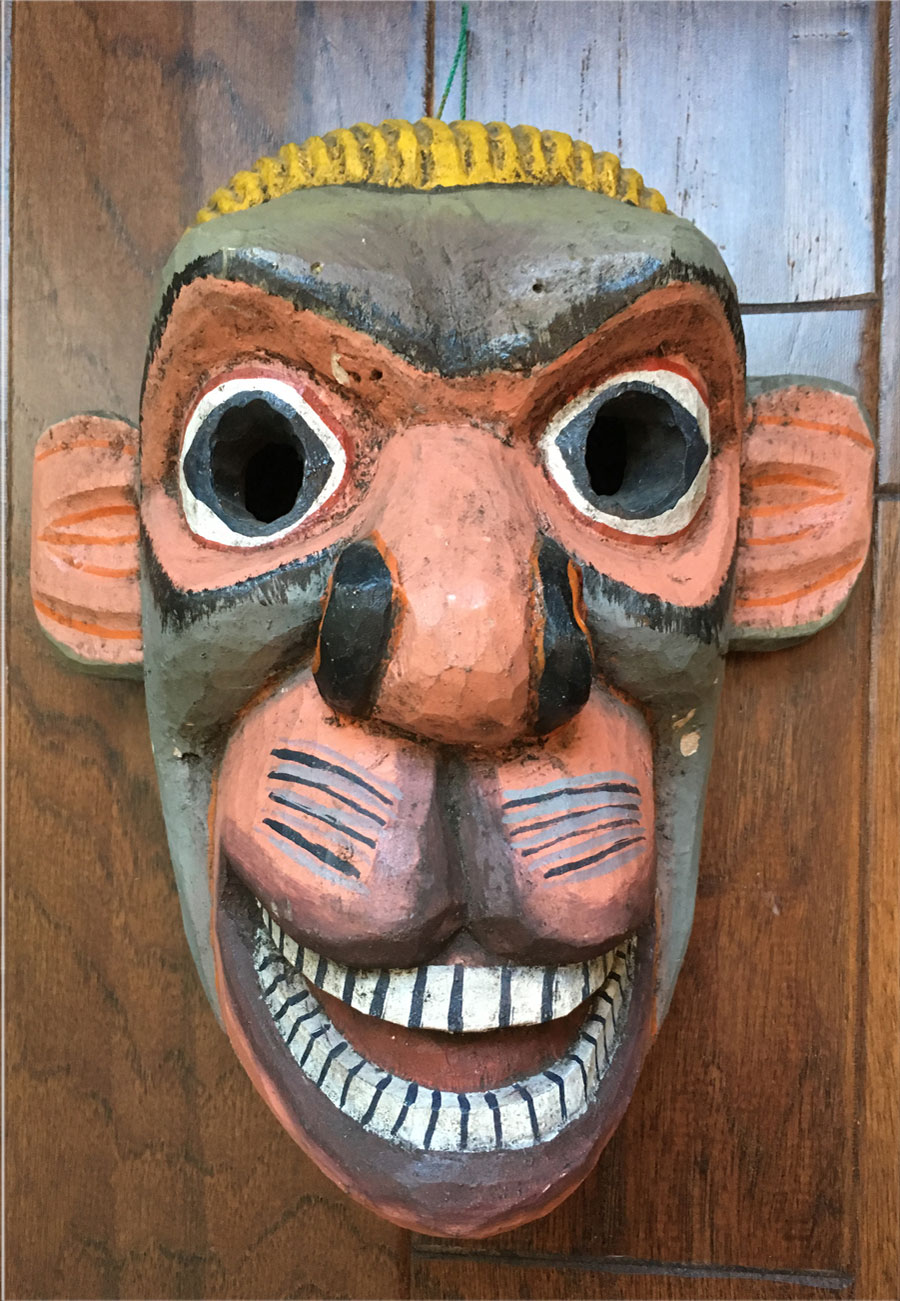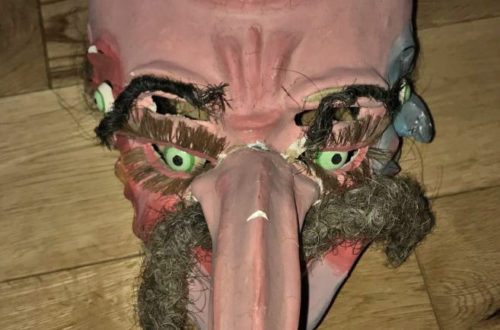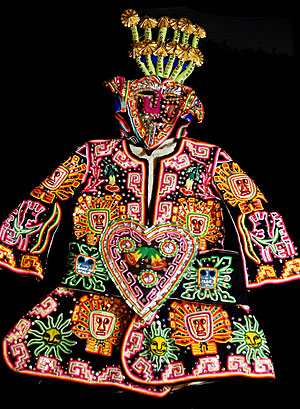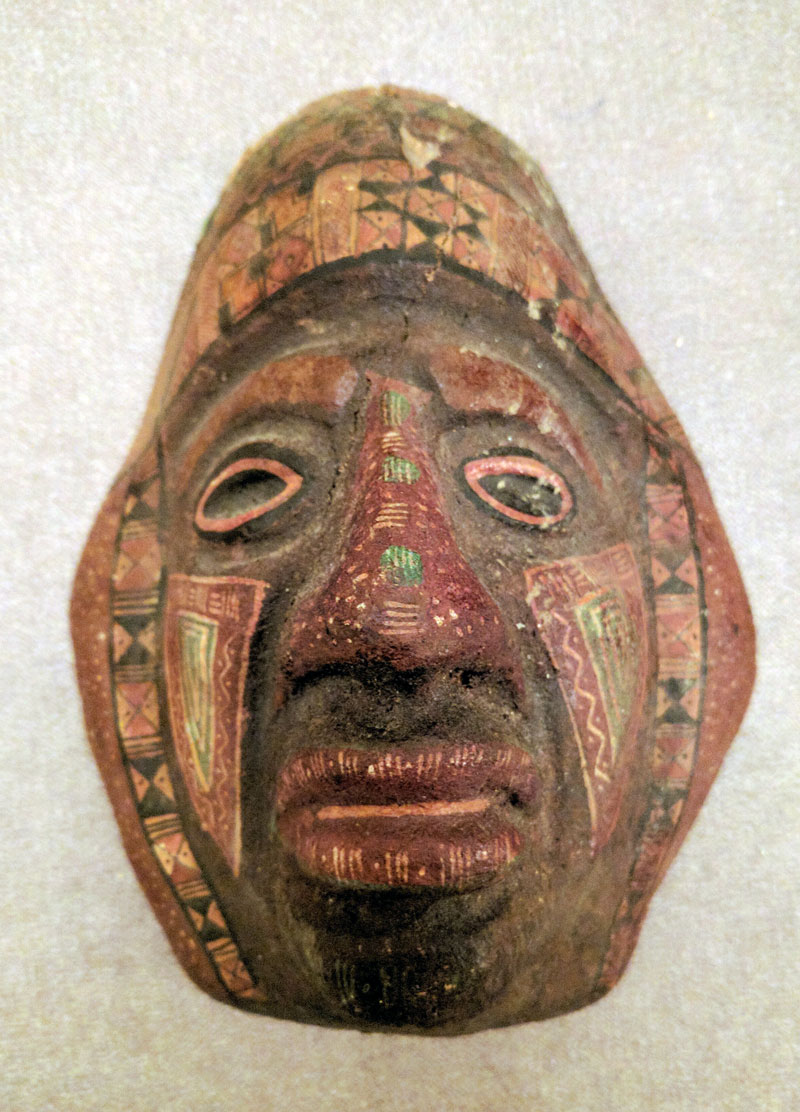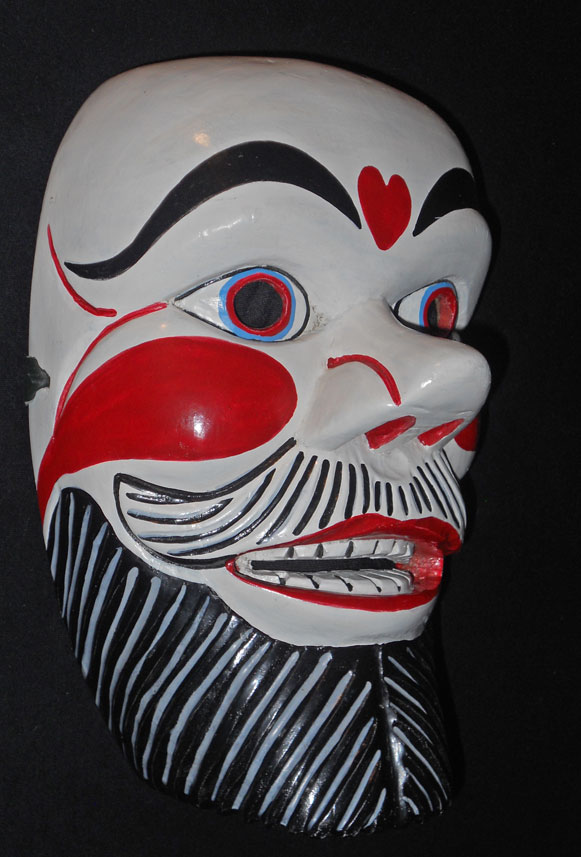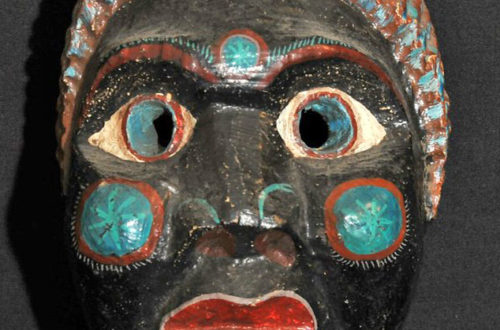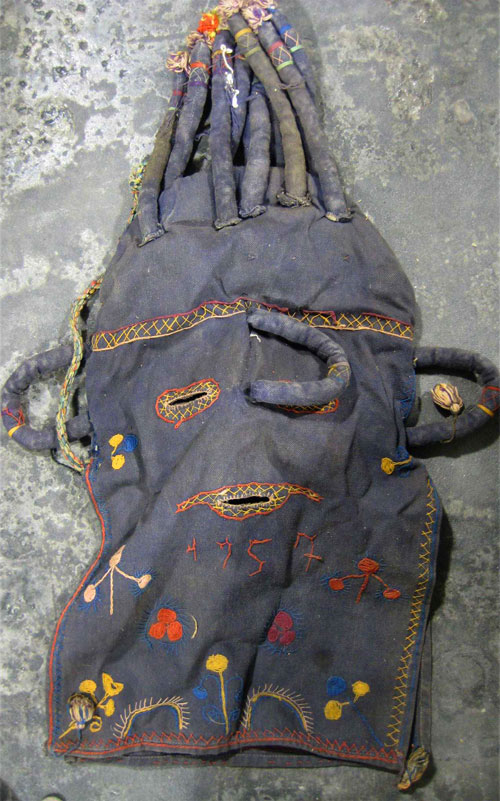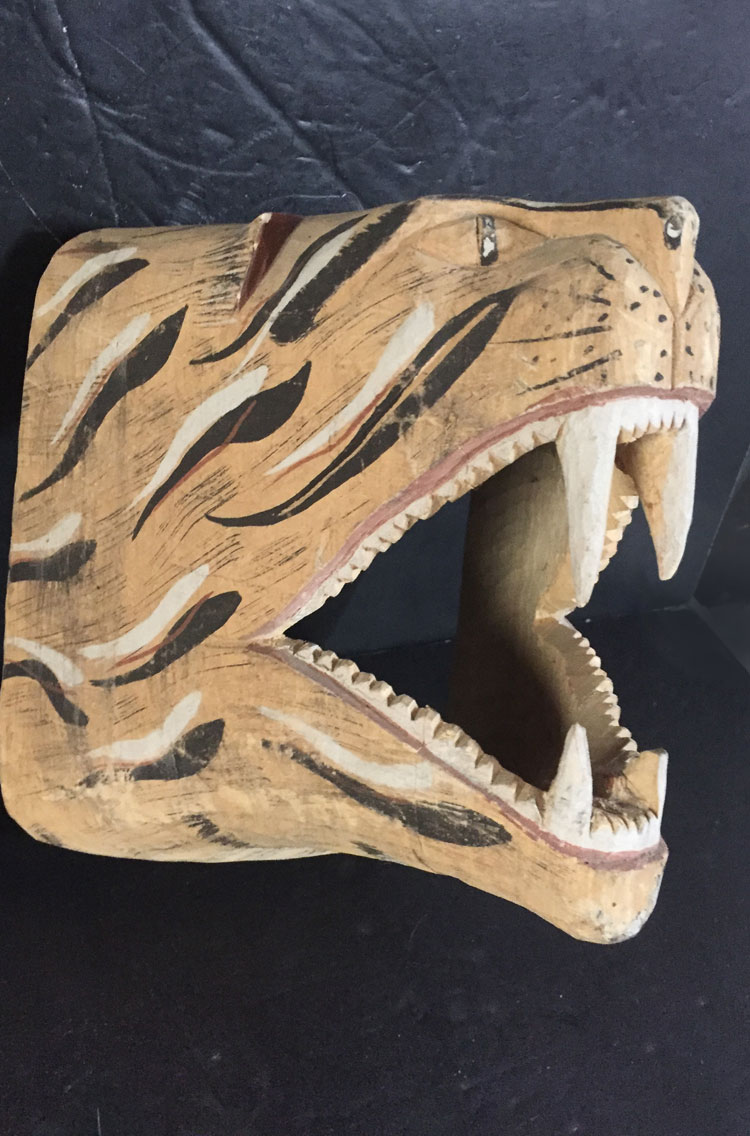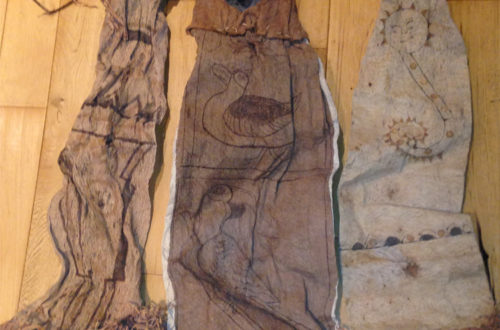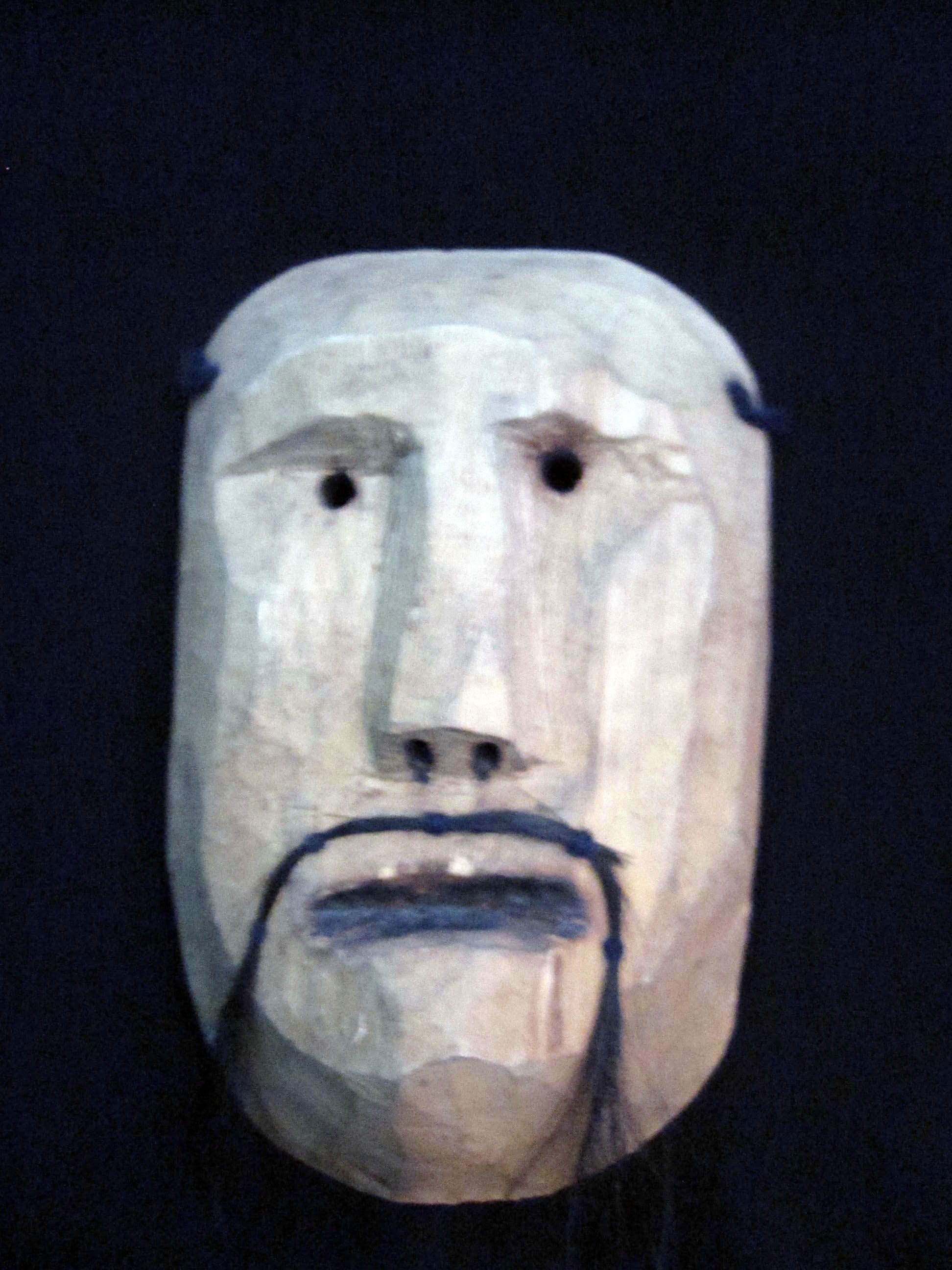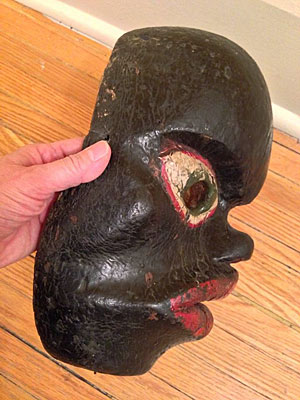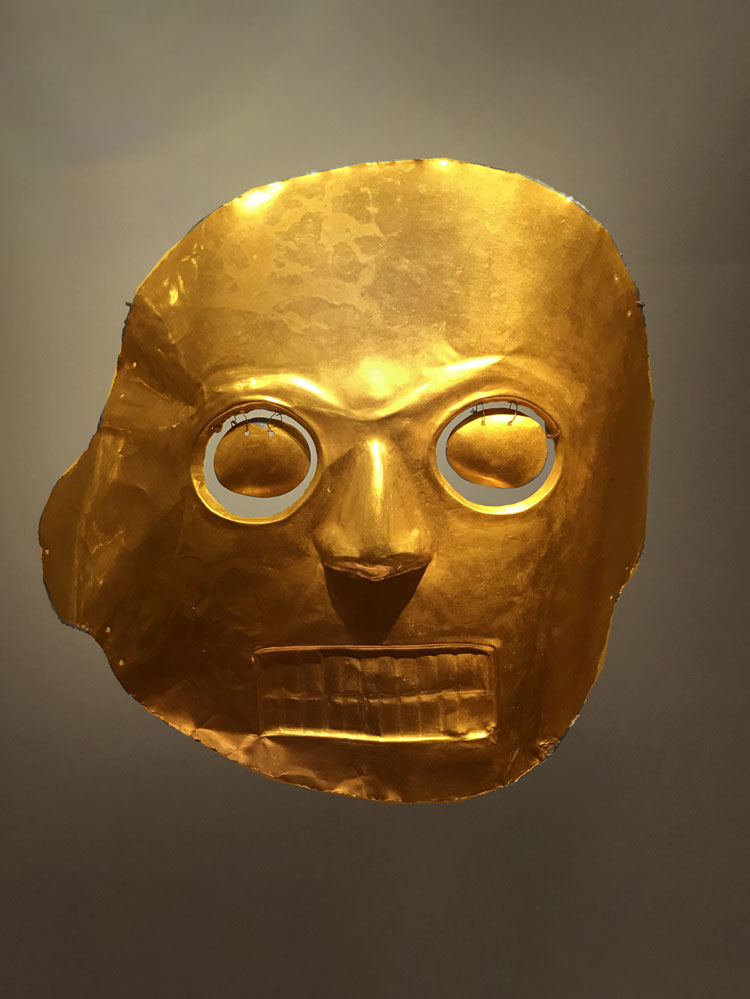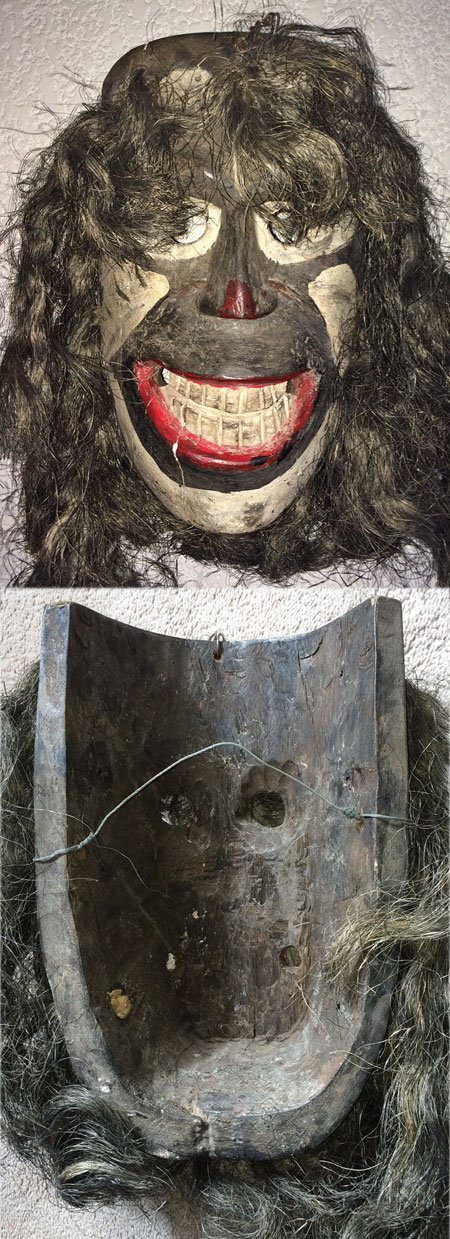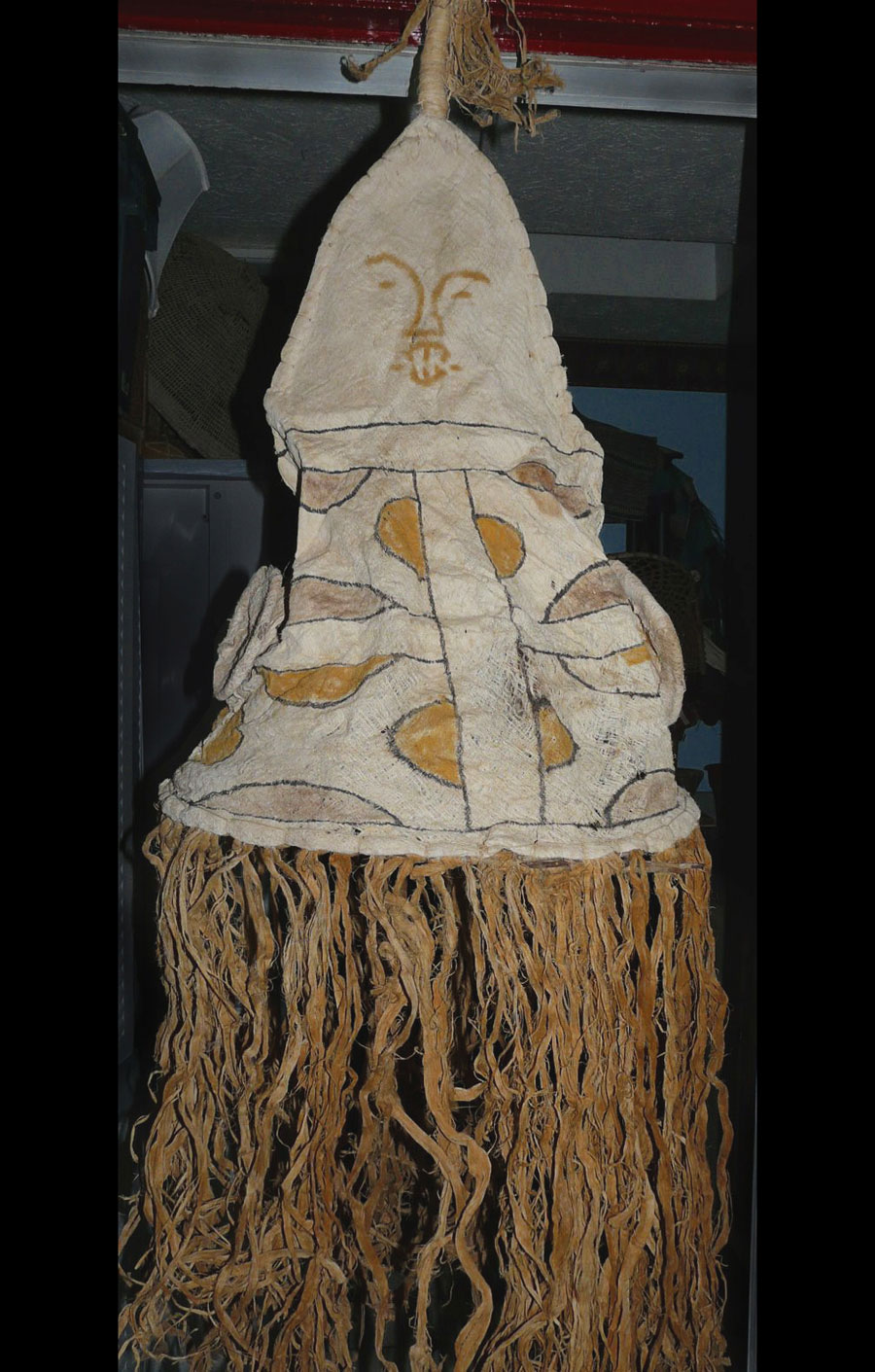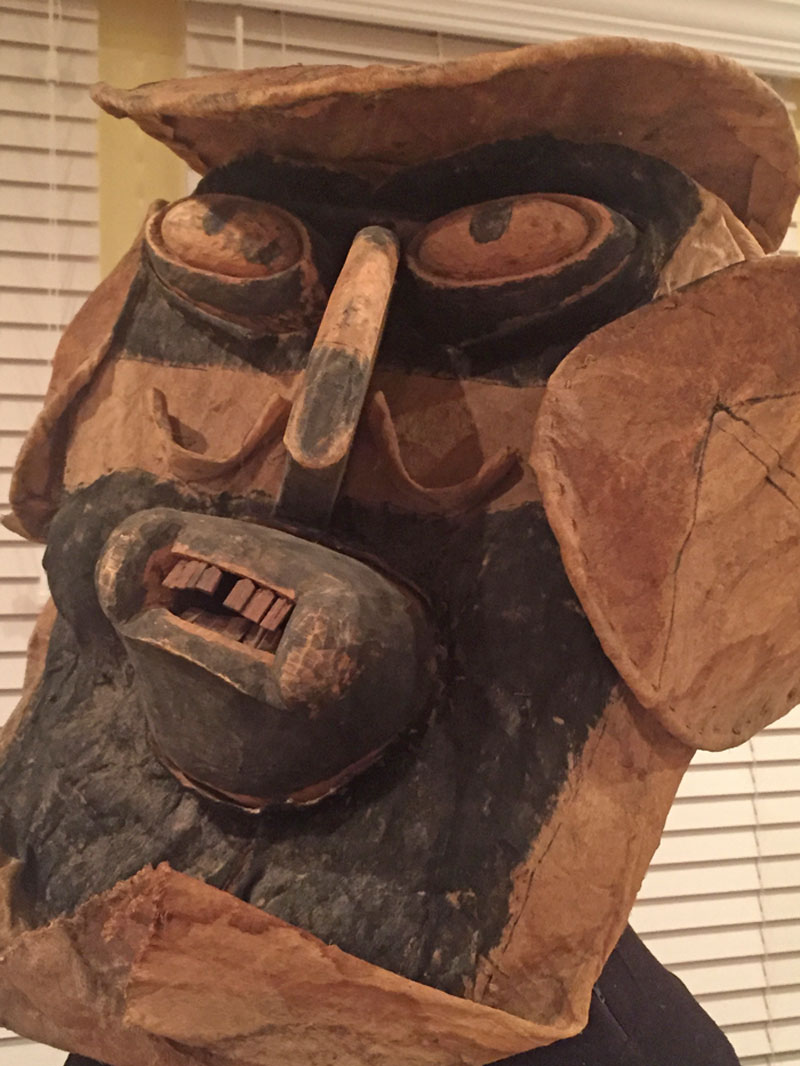Q: I believe this devil mask is from Brazil. I inherited my friends’ home, and found this and two other masks; my friends had lived in Brazil about 20-30 years ago. The mask is approximately 15” tall and appears to be papier-mâché, though I’m not sure (one of the horns is soft). It looks like some images I’ve seen online of the Carnaval de Oruro. Can you tell me more about it and approximate worth? Carol, 1389 A: Not Brazil, but over their western border in Peru. Oruro is in Bolivia where the masks are similar in style. It has not been used. Large and very traditional, I think most…
-
-
2000-yr-old mask from Argentina
I don’t think any of our viewers could afford an ancient mask like this, but I hope some of you enjoy seeing it as much as I did. Made between 100BC and 250AD by the Alamito tribe of north-western Argentina was recently in the news. It’s smooth, grey-quartz face has a sloping rudder of a nose and five holes: two for the eyes, one for a mouth puckered in confusion, and two at the sides to allow the masks to be tied around the head. It was priced at $135,174. This wasn’t a record. Two years ago a Baule Goli mask fetched $1.4m at Christies (it once belonged to Picasso).
-
Amazon Indian mask
Q: This mask measures 10″ high by 7″wide. A tag inside says it is from Columbia. An interesting feature is that the wooden ears are tied to the back of the natural fiber covering, and they extend out when worn. I got this one on eBay for $35 last winter. Thank you for any comment. Alfredo, 1327 A: Colombia extends into the northwest part of the huge Amazon basin. According to Barbara Braun in the Arts of the Amazon, there are at least seven native cultures occupying this area. My guess would be the Guahibo people made it. What Alfredo thinks are ears could also be teeth or horns.…
-
Wari burial mask from Peru
This type of reddish burial mask was made about 700 AD. It would be from the Wari people. Masks from a mummy of this preColumbian culture in Peru are sometimes found in tombs around Lima’s Huaca Pucllana. The weather is very dry there and these old wooden masks hold up well. Their red color can be much brighter. The eyes are dark, flat stones on white shells. Like ancient Egypt, burial masks were used in upper-class funerals before the Spanish took over in South America and Mexico. Death masks are used by Christians as well.
-
Indian cloth mask from Ecuador
Q: What is this? Chris, 1318 A: It’s a cloth sack with another face on the back so the dancer can never be surprised by the Devil in the Inti Rymi ceremony. Not your typical mask. They’re used by the Quechua people who live in the Northern Andes of Ecuador. These are not as common as carved wood masks, but they are used even today. You can see one of these on page 161 of Masks of the World by Ibold and Yohn. Extras are sold to tourists… and for a reasonable price. A-
-
Animal mask of Amazon Indians
Q: This was gift from a friend (no longer here) of my husband’s. I have seen nothing similar on the web. I know nothing about it. It appears to be a bat representation. The material may be gourd with raffia. Amy, 1272 A: Your mask probably represents an owl. The Piaroa-Huarime Indians who live in the Northern Amazon region (close to the Orinoko River) use masks that mimic many different creatures. The black coating is actually a kind of wax. This is a beautiful example of one I’ve not seen before. It’s condition is perfect. Where do you think your husband’s friend got it? A
-
Precolonial funeral mask
Q Here is a mask I have. After research I did not find anything about it, so if you could tell me something I’d be very appreciative. Jelena, 1266 A Funeral masks were fairly common for many years until the Spanish arrived about 500 years ago in Central and South America. So is this a careful reproduction or the real thing? That’s an important question that I hope some of our viewers will comment on. I have little experience with ancient artifacts. Wait until you know before selling.
-
Animal mask from the Amazon?
Q: Found this mask at a local flea market this summer. Didn’t pay much for it, or several others from the same guy. I have not seen any like them before. The top is an old cloth with a soft wood framework supporting it. Not counting all the raffia it is about 10 inches long by 7 inches wide. Height is 5 inches. I really got lucky at the flea market when I picked up these 9 great masks for under two hundred dollars. Fred, 1236 A: I’m going to guess and say this comes from the Piaroa-Huarime people who live along the Orinoko River in the northern Amazon basin.…
-
Jaguar mask from the Chiriguanos
Q: I purchased this mask at a flea market in San Francisco a while back. The seller didn’t know anything about it but he only charged me $20. It seems to be made from a light weight wood and measures almost 11″ tall 9″ wide and almost 10″ deep. I would love to know where this is from. Dustin, 1201 A: The Encyclopedia Britanica says… “Chiriguano, (pejorative), also called Guaraní, Guaraní-speaking South American Indians living in the Bolivian foothills of the eastern Andes and in Argentina. They are linguistically and culturally related to the Tupí-Guaraní horticulturists living throughout the tropical rain forests of the Amazon basin.” The book, Masks of…
-
Pre-Columbian burial mask
Q: Here is a burial masks made of pure gold from the Oro Museo in Bogota, Colombia. Amy, 1191 A: In the spirit of full disclosure, Amy is one of my beautiful daughter-in-laws. I’m sure she enjoyed her visit to the museum. Burial masks could be found outside of Columbia in some other Central and South American countries before 1492. They are not unusual, and were often made of materials other than precious metals. The museum is one of the most visited tourist highlights in the country. It receives around 500,000 tourists per year. It displays a selection of pre-Columbian gold and other metal alloys. Together with pottery, stone, shell,…
